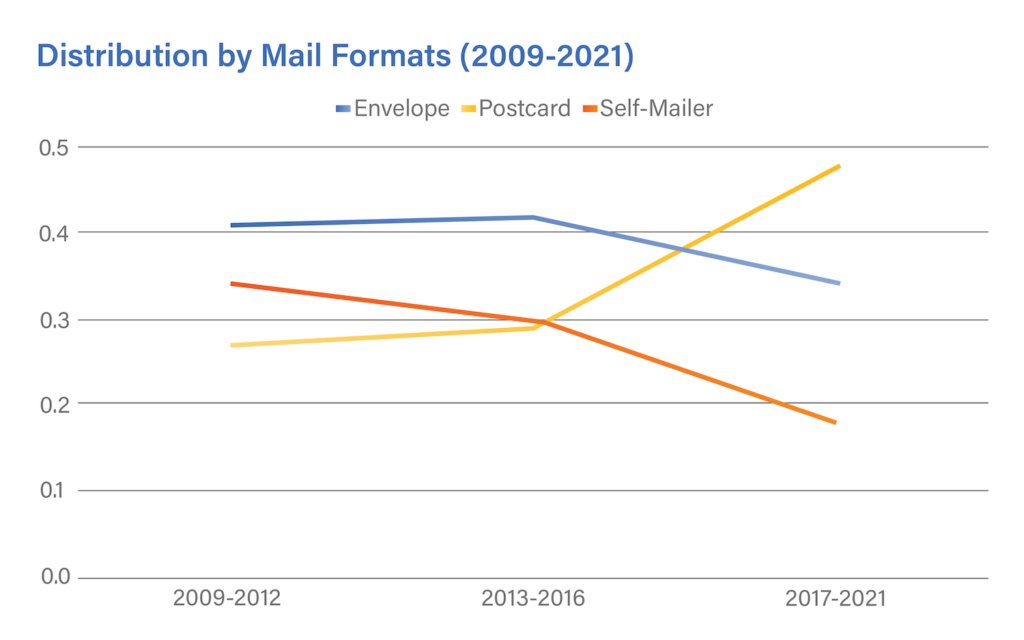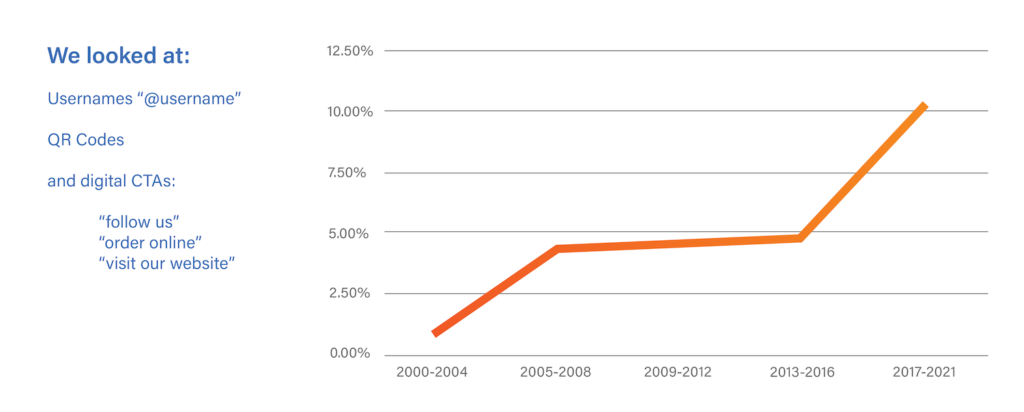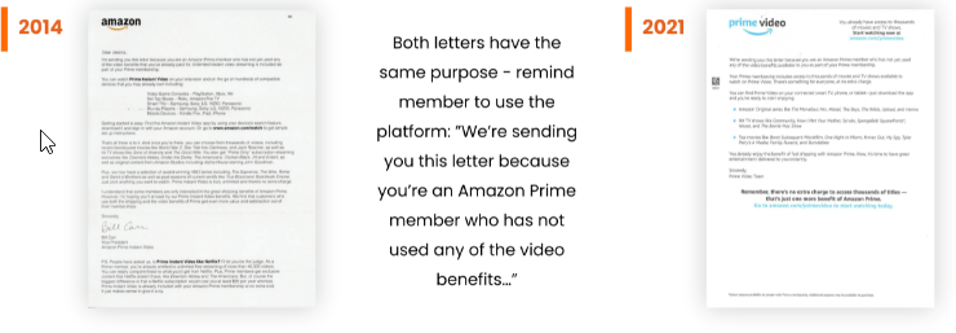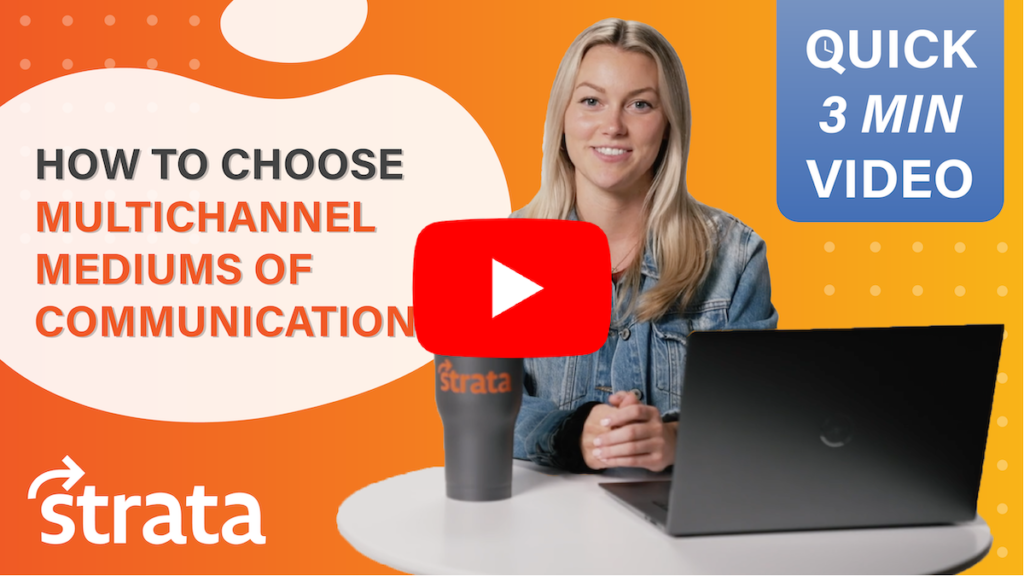Key Takeaways from SHSMD Connections 2022
Back at it Again!
It was great to see everyone at SHSMD 2022 in National Harbor, MD! With our new, brightly lit and eye-catching booth backdrop, we were able to meet new contacts – as well as catch up with current clients! The light and inviting atmosphere of our booth made it a great space to discuss marketing goals and showcase some of what we do here at Strata.
With SHSMD 2022 wrapped up, we’re excited to see how our connections grow, and how we can continue to help healthcare marketers and others with offerings beyond just new mover marketing. Whether it’s patient acquisition, talent acquisition, or promoting your service lines – we’re here to take your marketing to the next level. With that said, here are a few of our key takeaways in case you missed the show or didn’t get to stop by our booth this year.

The Conference in Review
At the beginning of the show, the team first joined other SHSMD attendees at Monday morning’s keynote — delivered by Suneel Gupta, a bestselling author, host of an American Express docuseries and podcast, and Visiting Scholar at Harvard Medical School. He spoke on the importance of long-term successes coming from short-term embarrassment, and explained that by gathering people who will challenge, encourage, work alongside and coach you, you’re becoming “backable.” He also emphasized that putting yourself out there only helps you get better at what you do – and that it’s important to be “backed” by the team you’ve assembled.

From there, the team moved to breakout rooms to learn a bit more about the needs and challenges that healthcare marketers currently face. We attended sessions surrounding digital and AI learning, nursing acquisition and retention, media buying innovations, and more.
A big topic was the idea that – as we’re continuing to traverse the digital age, it’s important that healthcare providers meet their potential patients and talent where they are. Whether someone is looking for an urgent care center, a primary care provider, or employment, the goal is to remain end-user focused. When marketing healthcare services to people in your area, it’s vital (no pun intended) to utilize demographic and psychographic data for the targeted population that your healthcare center serves. Because of this idea and the rise of ethical marketing, we’re seeing just how tactful marketing campaigns – both print and digital – need to be in order to be successful and worthwhile. Strata is well versed in this notion, and the atmosphere and chatter at SHSMD 2022 simply reiterated and expanded upon what we know to be true. Whether you need marketing that will facilitate patient acquisition, talent acquisition, or service line promotion, we’re here to make smart happen. We can help streamline your marketing to reach the talent you need and the customers you want. Right where they are.
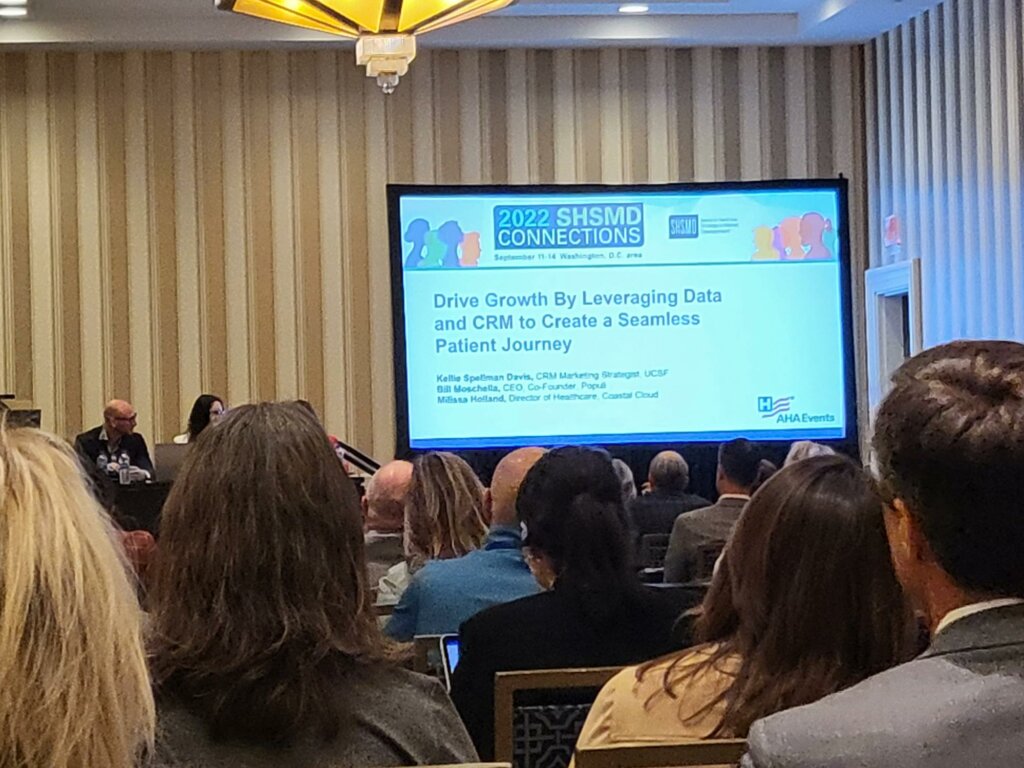

Some Final Thoughts
Last but not least – the conference reinforced the importance of good design to reach and engage your target audience! We’re glad that, here at Strata, personalized, eye-catching campaigns are right up our alley – and we have the experience and design talent to make them happen. Using demographic and psychographic data, as well as eye-catching imagery and layout, we create compelling pieces of print, direct and digital mail that follow branding specific to our clients and incorporate unique touches that help your system stand out among competitors.

Didn’t get to discuss your healthcare needs with us at SHSMD 2022? No worries. We’re happy to have a quick chat or set up a call. Contact us today!
Untrue & Debunked
With years of experience, we’d say we’re experts in direct mail marketing. But we’re not just the mail people. We provide highly impactful direct mail marketing that cuts through today’s digital noise to deliver a tactile experience and leave a lasting impression. That’s why we’re well versed in all of the misconceptions about direct mail floating around out there, and can tell you exactly why they’re untrue. Follow along as we debunk the 6 misconceptions of direct mail.
Misconception 1: Direct mail is past its heyday
Once in a while, we hear people speculate and assume that direct mail is past its peak – but just because direct mail has stood the test of time, doesn’t make it outdated. It’s been around for a while for a reason, and has evolved and changed over time – with the times. In fact, in a recent IAB survey, six out of ten marketers prefer direct mail over other offline channels and still include it in their direct marketing strategy today.
These days, direct mail breaks through the digital noise and is unique and different than other marketing tactics. It brings about nostalgia, as people enjoy the feeling of paper in their hands, similar to enjoying paperback books over kindles. Plus, for every 36 emails you receive (on average), you get 1 piece of mail in your mailbox. The possibilities are quite endless, with many exciting design opportunities and options. Really, direct mail is only boring and old if you make it that way.
Misconception 2: Compared to other tactics, direct mail doesn’t provide ROI
This one couldn’t be further from the truth. Don’t believe us? Here are just a few stats to back us up. The average lifespan of an email is 17 seconds, compared to direct mail’s average lifespan of 17 days. Up to 90% of direct mail gets opened, compared to only 20-30% of emails. Per USPS, 98% of people check their mail daily and Americans spend upwards of 30 minutes with their mail on a single occasion. Direct mail open rates can reach up to 42%. Recipients of direct mail also “purchase 28% more items and spend 28% more money than people who don’t get that same piece of direct mail.” Direct mail gets response rates 10 to 30 times higher than digital channels, according to the DMA (Direct Marketing Association).
Basically, direct mail usually does very well in terms of ROI, and it can (and should) be tracked – so make sure you’re getting the most out of it by making it trackable with the use of digital touchpoints.
Misconception 3: Direct mail marketing is expensive
When people think of print, they sometimes think of high-cost, but that’s not always the case. If you have a quality list and are getting the most out of each mailer you send, direct mail won’t seem all that expensive. What do we mean by a quality list? If you’re sending to strategic, particular contacts – not just any contacts, your ROI will be worth the price.
Additionally, print often gives you more for your money while other marketing practices alone may not (for example PPC, social media ads, email marketing platforms, and more). According to the stats, mail marketing is much more likely to be seen and paid attention to.
Misconception 4: Millennials and younger don’t like or pay attention to direct mail
Direct mail isn’t just effective for older audiences. Actually, 73% of American consumers (in general) say they prefer being contacted by brands via direct mail because they can read or review the information at their leisure. And, 41% of Americans of all ages look forward to checking their mail each day.
Millennials, specifically, like to feel important and seen, so the personalization opportunities of direct mail make for great millennial marketing. To add to this, many millennials and Gen-Z-ers have digital fatigue and find taking a “break” with print to be often enjoyable, and it “should be no surprise that those raised on the internet are best able to tune out online ads.” They also have shown to have a lot more trust in print resources than in digital.
Misconception 5: Direct mail works on its own and doesn’t integrate with other channels
These days, direct mail is actually an excellent touchpoint among many, especially when conducting a multichannel marketing campaign. And, we’d even say that combining tactics, even if it’s just two, is usually the way to go. In a recent study, a whapping 68% of marketing respondents saw that combining digital and direct mail increased visits to their websites.
So, how do you integrate physical with digital? By using a URL of a landing page or website, a PURL (personalized URL), BRC (business reply card), or a QR code. Any of these can be used to lead the viewer to a digital touchpoint. These can all also be used to measure attribution and better understand your target audience, and the emails and other information acquired from BRCs or online landing page forms can be used for email marketing, targeting customers with digital advertising, and sending further communication.
Misconception 6: Direct Mail = Junk Mail
Unlike junk mail, direct mail is focused, targeted, relevant, ROI-producing, and uses a quality send list. For more on why direct mail isn’t the same as junk mail, check out our blog, “Direct Mail vs. Junk Mail”, here. Strata can be a resource for direct mail with a surgically targeted list of prospects that are not only more likely to have a need for your project or service, but are also more likely to respond.
Now that it’s a bit clearer that direct mail is relevant, effective, and can be a huge part of the bigger picture of a marketing strategy, you may be interested in giving direct mail marketing or multichannel marketing a try. If so, give us a call.
A Strata YouTube Channel Original
Multichannel campaigns can be complicated to create, and once you create them, even more work needs to be put in to make them as effective as possible. In the last YouTube video of our Multichannel Marketing series, we’ll go through how to optimize your multichannel campaign for the best success and highest ROI.
What’s an Optimum Multichannel Campaign?
An optimum multichannel campaign is a campaign or workflow that converts every possible campaign member. Keep in mind – that doesn’t mean every person in the campaign, as there will always be some members that are truly impossible to convert. Why? Things happen. People start new jobs, financial positions change, people move, etc. The list goes on. The point of optimization is to optimize for what can be controlled, and in this instance, that’s the customer journey or workflow.
Two Categories of Multichannel Campaign Optimization
- Theoretical: This category happens before starting your campaign. It’s the last but usually the most time-consuming portion of actually building your workflow. It’s done through effective use of assumptions and historical data from similar campaigns. The steps to do this? Assign estimate conversion rates to each of your workflow components and then use them to calculate expected conversions – taking the output of one component as the input of the next. Although it’s very time consuming, it’s worth it in the end. Theoretical optimization helps you optimize both your campaign and create stronger projections for your campaign’s performance.
- Empirical: This category happens while the campaign runs. Instead of using historical data from other campaigns, you’ll use historical data from this campaign. So, factors like audience and creative can be held constant. You’ll still go through the same process – assigning your empirical conversion rates to each of your components, and going through the calculations to more accurately predict overall campaign outcomes. Measure your component’s KPIs while simultaneously updating projections based on the changes to your workflow.
To hear from our Director of R&D, Harrison, on what else you’ll want to do, as well as what tools you can use to optimize your campaign, click on the video below. Or, if you’d like to discuss multichannel marketing optimization with one of our experts, contact us today.
Why They’re Not (at All) the Same
Sometimes direct mail gets a bad rep. Why? Because it’s commonly mistaken for junk mail. But other than being mail, these two have nothing in common. Direct mail only falls into the category of junk mail when it’s poorly executed. When done right, direct mail targets, entices, and benefits a specific customer. Someone, who through market research, is most likely in need of your product or service. It’s designed with purpose in mind, is backed by research and data, drives audiences with calls-to-action, and is highly customized and personalized. Take a quick read to further understand how direct mail differs from junk – and why it should be a key part of your company’s marketing strategy.
Direct Mail Starts with a Good List
The biggest difference between direct mail and junk mail is a good list. A list that’s backed by data, and one that targets the right people – not just any people. Before making an effective, comprehensive or specified list, first review the mailing lists you currently have. Who are you sending mail to? Who have you sent to in the past? Are they the right audience(s)? Are there more audiences (or more specific audiences) you should be targeting?
A wrong list will fail to target those who’d be interested in buying from you, and will often also target those who’d have no interest at all (cough, cough – junk mail). For example, sending “get 10% off your first order with us” to a loyal customer, or even worse, trying to sell meat to a vegetarian. Junk mail goes to anyone and everyone, and often with irrelevant and impersonal information. Plus, it’s often a waste of money, as many of those unspecified and uninterested customers will throw your mail out without a second thought.
In contrast, direct mail is sent to people in data-driven lists, and with messaging that makes sense for their specific customer profiles. Compiling this strategic list makes all the difference in targeting the right customers and catching their attention. Direct mail, unlike junk, is sent to direct people for direct reasons. In fact, 42% of recipients read or scan direct mail that’s relevant to them.
Types of Direct Mail Lists
Direct mail lists come in many forms, so it’s good to take a look at them all before deciding what will work for your company and its marketing needs. Here are the 4 most common ones:
House List: A list you’ve collected on your own time of prospects and customers you’ve made connections with. People on this list are likely to respond, because they’ve already responded to previous offerings.
Response List: A list you’ve put together of people who’ve responded to and reacted to your outreach before. Whether they’ve purchased something or have asked for more information, these people have some level of interest in your offerings.
Compiled List: A list of candidates that went through screener questions and possessed a characteristic or set of characteristics you searched for. These characteristics are fixed, and are most commonly age, gender, location, or income level.Another characteristic could be new movers – those who just moved in and are looking to become loyal customers of your services.
Segmented List: A list curated through a high-tech analysis platform that defines key prospects. This type of list accesses information far beyond age, income, and gender, and gives you the ability to micro-target your market for more extreme results and higher ROI. This type of targeted list also helps you avoid sending to “do-not-mail” contacts.
Direct Mail Has Personally Relevant Messaging
After you decide on a list, the next step is deciding on the right messaging. Direct mail isn’t just about knowing who to send to, but how to speak to them to get them to notice, develop interest, and potentially buy from you. Look into your customers’ buying habits. What entices them? What offerings are they most interested in? And, how can you best reach them? Knowing the proper way to connect with your current and potential customers will help your mailer stand out. Don’t just use a cheesy, typical slogan or generic text. Craft words that highlight who you are, what makes you unique, and why they should use your surfaces or buy your offerings (over others). Make your mailer personal by adding their name, incorporating content that makes sense to their age and other demographics, and including offers applicable to them. Lastly, a clear call-to-action can educate the recipient in how to respond in the most efficient and convenient way possible.
Direct Mail Has Purposeful & Impactful Design
Lastly, once you’ve crafted effective messaging, design your mailer with intentional and engaging visuals. Make sure you’re thinking through the following key design aspects:
Sizing: Think about what size mailer makes sense for your audience, and what will help yours stand out in the mailbox among others. And, in terms of font size – think over what message is most important to get across. Use sizing hierarchy to emphasize words like “free” or “grand opening”.
Layout: Always consider how you want the viewer’s eye to be lead across your mailer. One good technique is the “s-curve” layout – which leads the eye down and across by using imagery on the left and words on right, or a similar variation.
Graphics: Using unique and eye-catching graphics is a great way to make your business stand out from the rest. Be sure to use high quality images as well as consistent branding elements – such as a logo, fonts, colors, and textures. And, go further by using variable images depending on who’s receiving the mailer to make it resonate with the viewer.
Color: Pops of color are also a great way to spice things up – especially when they’re not expected, or to emphasize a call to action. For example, use pops of color on new services, departments, or special offers, or to emphasize a QR code.
Altogether, the key to good mailer design it to ensure it resonates with the customer and emphasizes who you are and the message you’re trying to send. For more help with mailer design, specifically, check out our blog on current direct mail trends.
Now that we’ve gone through what makes direct mail, well, direct – we hope you can see that it is drastically different than unsolicited junk mail. If you’re looking to make a change with your direct mailers or simply want to learn more, contact Strata’s experts.
From QR Codes to Concise Copy
Direct mail trends can be difficult to forecast, and even harder to use correctly and efficiently. However, you’re in luck, because as direct mail experts, we’re providing you with the top 10 direct mail trends – from QR Codes to concise copy – that have and continue to dominate 2021.
1. QR Codes
In the last few years, QR codes have really built a name for themselves. Not only because of their quick, digital nature, and the 2% postage cost break that comes with them, but because of their data-backed effectiveness. When a QR code is included in a way that makes sense- it provides a time-saving benefit to the customer while letting the company lead their customer exactly where they’d like them to go.
Although the year 2020 was detrimental for most industries and marketing tools, the QR code flourished. During a time where we didn’t want to physically touch anything, QR codes made up for physical marketing pieces like menus, signage, print ads, and flyers, leading customers from physical to digital – and quickly. The more QRs were seen, the more used to them we became (similar to our newfound familiarity with masks and hand sanitizer). And they’re still going strong in 2021.
Like we said, QRs lead customers to wherever a company would like them to go. They can provide helpful information, send the customer to a website, or even lead them to purchase.
2. Postcards on the Rise
Envelopes – they’re great and all, but let’s be honest, they add a few seconds (at least) to the time it takes to open (and read) direct mail. These days, it’s often better to send a postcard due to its more creative, eye-catching nature and faster access to information. Making it easier to read your call-to-action can often make customers more likely to respond to an offer or even visit a website or landing page for more information. Plus, they’re lower in cost – which means a better chance of higher ROI for your campaigns. As you can see below, postcards pushed past self-mailers and envelopes this year by quite a bit.
3. B2B Dimensional Mailers
These fun, three-dimensional, interactive mailers are the perfect way to stand out and cut through the clutter of everyday mail. “On the B2B side, dimensional mail is working well; because we all receive so many packages today, prospects want to open it and see what’s inside,” says Grant Johnson, Owner and CEO of Responsory. Although more costly and demanding in terms of postal handling, dimensional mail has the best B2B response rate at 8.51%. Check out our blog on the best secrets to a successful dimensional mailer campaign to get started on your own.
4. Better Segmentation with Data
“Accessing 1st and 3rd party data to further segment an audience will continue to play a huge role in a DM campaign’s success. If you’re able to align targeted messaging and great creative with those different segments, then that’s a recipe for increased response rates. Furthermore, surrounding that DM send with a similar message/offer through various digital channels will only add to that campaign’s success. Being able to hone in on delivery dates and putting an emphasis on speed to market are big contributors to making a direct mail/digital integration program thrive.”
– Mike Efstathios, Business Development at ICS Corporation
Data, data, data. It’s all everyone can talk about these days – and for good reason. Enriching your data qualifies your audience, and in turn, increases your ROI. And, if your marketing strategy is multi- or omnichannel, the customer experience becomes even more successful. While better segmenting your data may cause your audience to shrink, it will definitely cause your engagement to grow. Like we always say – it’s better to target the right people than all the people.
5. Increased Personalization
88% of marketers recently reported seeing better campaign metrics after using personalization in their advertising. More than ever before, the need for marketers to make human connections is extremely relevant, and some may even say necessary. The majority of our population feels they’ve lost personal connections and relationships due to the pandemic. Because of this, 2020-2021 has been the time to make up for lost connections by personalizing materials to bond with your audience and make them feel seen, heard, and human. Check out our blog on the best ways to get personal, here.
6. Higher Response Rates
Since the beginning of 2021, we’ve seen a rise in direct mail response rates. Why? More time at home means more time to go through – and even pay attention to, mail. And as the trend of working from home and staying at home has continued and even increased, response rates don’t seem to be dwindling anytime soon.
However, high response rates don’t just come from people staying put. They come from quality tracking, targeting, design, and audience awareness. For more tactics to increase response rates, visit this blog.
7. Interactive Direct Mail
In today’s world, we’re surrounded by technology. And with all of this technology, there’s no reason we shouldn’t be incorporating it into our direct mail efforts. 2021 brought new technology and an abundance of data that empowers companies when targeting audiences and crafting content. Next time you’re sending direct mail – think about how far you can go with it. Can it include a scratch-off? A game? A free kit or item? A contest? It’s pretty limitless.
8. Digital Prompts
Direct mail isn’t only a way to reach customers, but an excellent way to reinforce online efforts. Simply use social icons, QR codes, or other prompts to send customers to social platforms, websites, menus, forms, landing pages – you name it! Marketers are definitely catching on to this direct mail tactic, as usage of digital prompts has doubled in the last four years. Take a look at the chart below to see how the use of digital interactions has increased.
9. Concise Copy
It’s one thing to know what you want to say, but knowing how to say it is the real key to direct mail effectiveness. Throughout 2021, we’re seeing shorter sentences, smaller paragraphs, fewer bullet points, and obvious CTAs. Your audience’s attention span is only so long, so catching the ears and eyes right away is crucial.
Below is a great example of how Amazon has practiced this and changed their copy to be more concise and clearer. Even at just a quick glance, the message is less overwhelming and more approachable.
Need some help with your direct mail copy? We’ve got a blog for you on ways to write action-inspiring content.
10. Investing in Direct Mail Tools
Although it’s not always top of mind, the right tools are one of the most important components of great direct mail. If you haven’t looked into or invested in marketing and data tools, you should be, because they can take your direct mail from general and stale to effective and exciting, and in turn, save you time and money. Instead of targeting the wrong contacts or using the wrong design elements, the right tools will ensure your mailer looks great and is sent to people who will actually open and engage with it.
Consider changing your format, ink, paper, or finish. Update your branding, content, or calls to action. Or, try technology like USPS Informed Delivery to reach consumers in a modern way.
So, there you have it! 10 effective direct mail trends that took off this year. If you’re interested in learning more about enhancing your direct mail, feel free to contact the experts at Strata. We’re happy to get you started with some great direct marketing materials.
A Strata YouTube Channel Original
Choosing the right multichannel campaign mediums can be difficult if you don’t have a good starting foundation and the right tools. That’s why, in our most recent YouTube video, we walk you through the key things to keep in mind when making this decision, and how to pick channels that best fit your company’s marketing needs.
Evaluate Your Brand & Customers, First
Before you even look at where your audience is and what they want, look at your own brand, brand voice, offerings, and then your target audience. Once you have these nailed down, then you can think about your customers – because if you understand your customers, you can understand where it’s best to communicate with them. Get to know your customers on a deeper level through data and tracking so you can develop personas and demographics, and fully recognize their pain points, wants, and needs. Test and measure tactics, update and reaudit your customer experience, ask for customer feedback – whatever you need to do to truly know your audience and therefore get the most out of your multichannel campaign. After all, 86% of customers are willing to pay up to 25% more for products and services just to have a better customer experience. Once you know your audience, then, and only then, can you figure out exactly where to meet them on their multichannel journey.
If you want to know what comes next in choosing the right mediums of communication for your multichannel marketing campaign, click on the video below and hear more from our Marketing and Social Media Coordinator Bridget. Or, if you’d like to discuss this concept with one of our multichannel experts, contact us today to get your next (or maybe even your first) multichannel campaign started.
Not Our First Rodeo
Even though this wasn’t our first rodeo, SHSMD Connections 2021 didn’t disappoint. We had great conversations with so many show-goers, and we got to do one of our favorite things – talk new mover marketing.
In previous years, SHSMD Connections has brought quite the large crowd. Yet, with the needed precautions due to COVID-19, this year’s show created a much smaller, more intimate setting. Although we weren’t sure how the event would pan out, the smaller turnout gave Strata the chance to really chat with others in the industry, and learn more about the needs and wants of healthcare marketers.
About the Show & Our Experience
This year, two of our employees attended the conference in San Antonio, Texas from September 19-21. With Strata’s booth being front and center as guests entered the exhibit hall, our exposure was unmatched, giving us many great moments for conversation. Our bright orange and yellow (recently refreshed) colors kept the atmosphere light and fun, making it easy for the team to meet as many new contacts as possible while also connecting with familiar faces.


We’re really looking forward to seeing, post-show, how these connections flourish and how we can help healthcare marketers and others within the industry with their new mover marketing endeavors.
Our Takeaways
Our presentation of SmartMove and all that we offer was a huge success, and the feedback we were given emphasized the significant need for our services. Healthcare facilities aren’t just looking for direct marketing, but direct marketing that will make an impact and target the right people at the right time. Whether attendees were familiar with new mover marketing or not, our team educated them on Strata’s personalized touch and efficient processes.
But, not only did Strata come prepared to share our services – but prepared and excited to learn! On their breaks, the Strata team attended numerous breakout sessions and learned about everything from inclusion and diversity in the workplace, to problem solving, engagement, and leadership strategies. They even had the chance to hear from Burl Stamp, President and Founder of Stamp & Chase, who discussed how to properly and effectively engage with and lead teams, customers, and communities (especially post pandemic).


Another great session that the team partook in was Derreck Kayongo’s keynote. Derreck presented on the topic of company culture and how to tackle the subject of company diversity head on, by sharing stories of his own childhood to his own organization, the Global Soap Project. Derreck did a phenomenal job guiding the audience through diversity and inclusion problems, and how they impact the corporate bottom line. He left the crowd speechless. The team was incredibly grateful to have attended and listened in on such impactful conversations, and are so excited to not only come back with some new connections, but with takeaways to strengthen Strata’s services and culture.
Our Final Thoughts
Overall, SHSMD 2021 was a success for Strata. While it may not have looked like conferences of years past, we’re glad our team had great conversations and made solid connections with those that could attend. Not to mention, our promo items were a hit! See you next year, SHSMD!
Didn’t get to swing by and meet us at the show? Contact us today to see how we can help!
San Antonio, Here We Come!
At Strata, one of our favorite things to do is talk marketing. We’re problem solvers, and we pride ourselves on helping industries overcome their marketing challenges. With healthcare marketing being one of our many specialties, we’re excited to announce that the Strata team is heading back to the annual SHSMD Connections Conference in San Antonio, Texas from September 19th-21st, and we couldn’t be more excited!
SHSMD? What’s That?
For those who’ve never heard of SHSMD (aka the Society for Health Care Strategy & Marketing Development), it’s an AHA professional membership group that focuses on how the industry can evolve and change with new strategies, marketing, and technology, serving more than 4,000 members.
This year, SHSMD is celebrating the 25th anniversary of their annual “Connections” conference, and we can’t wait to connect with some of the industry’s best marketing and communications strategists. It’s been two years since we’ve been able to interact with these professionals in person, and we’re excited to be able to once again inform, challenge and validate their thinking, while also learning from the conference’s guest speakers from all over the country.
What We’re Looking Forward to & What We’re Bringing
This isn’t our first rodeo (even though it’s our first time going to Texas), as we’ve attended this conference for 20+ years. However, this will be our first time back with a refreshed look, thanks to our 2020 brand refresh. As marketing experts with almost 30 years of experience, we’re excited to bring our expertise to the show, and create some new, long-lasting relationships.
It’s clear that the healthcare landscape is evolving faster than ever, and to stay competitive, hospital systems need to start looking at marketing as a strategy rather than an afterthought. We plan to go into the show with an open mindset and to educate healthcare industries on the importance of New Mover Marketing and how SmartMove can help them achieve their patient acquisition goals.
If you don’t know who (or what) we do, Strata offers a wide range of client-driven solutions to help companies solve complex marketing and communications challenges. We’re a lot of things (innovators, go-getters, marketing experts), but we’re people first—and we know you are, too. That’s why we believe the best way to help a business achieve its marketing goals is by focusing on the people who work there.
Learn More
If you’re attending this year, stop by booth 216 to learn more about how Strata can help you with your marketing efforts. We can’t wait to meet you!
If you’re not attending the upcoming conference- no worries. Contact us today to discuss your own personal marketing plan from the comfort of your own home.
A Strata YouTube Channel Original
We’ve all heard the saying “know your audience” before, but what does it really mean, and how will it help you plan your next multichannel marketing campaign? In our most recent YouTube video, we dive into some tips & tricks for targeting your perfect multichannel campaign audience.
Really Know Your Audience
Before you even start your campaign, you need to nail down who your audience is and why you’re targeting them. Recent surveys show that 74% of consumers get frustrated when they receive content that has absolutely nothing to do with their interests, which is the main reason companies are quickly switching to multichannel marketing campaigns – designed to be customer-centric, provide a top-tier experience, and drive high ROI. But success still comes down to how well you know your audience, which is why it’s so important to create accurate customer personas. A persona is simply a fictional character that represents the ideals and motives of your target audience. Some common (and extremely useful) research tactics to create correct customer personas are researching buying habits, consumer preferences, search behaviors, and communication methods. Don’t limit yourself to just one persona if it’s useful to create more! You can utilize several different personas depending on how diverse your target market is. It’s important to think beyond your “classic customer,” and diversify your buyer profiles.
The Buyer Journey
Outlining and creating a framework for your buyer’s journey will dramatically affect your sales. Some key questions to ask yourself to understand their journey are:
- “What purchases are being made?”
- “Where are the purchases coming from?”
- “How are they making purchases?”
These questions will help you build a premium customer experience from campaign start to finish. The more data you’re able to acquire on their buying habits/decisions, the better you’ll be at mapping out their customer journey. After narrowing down your audience, you can better source all imagery, content, and workflows they’ll come across throughout the campaign.
Want to learn more about perfecting your multichannel marketing audience? Click on the video below to hear more on this topic from our Marketing and Social Media Coordinator, Bridget. Or, if you’d like to discuss this concept with one of our multichannel experts, contact us today to get your next (or maybe your first) multichannel campaign started.



